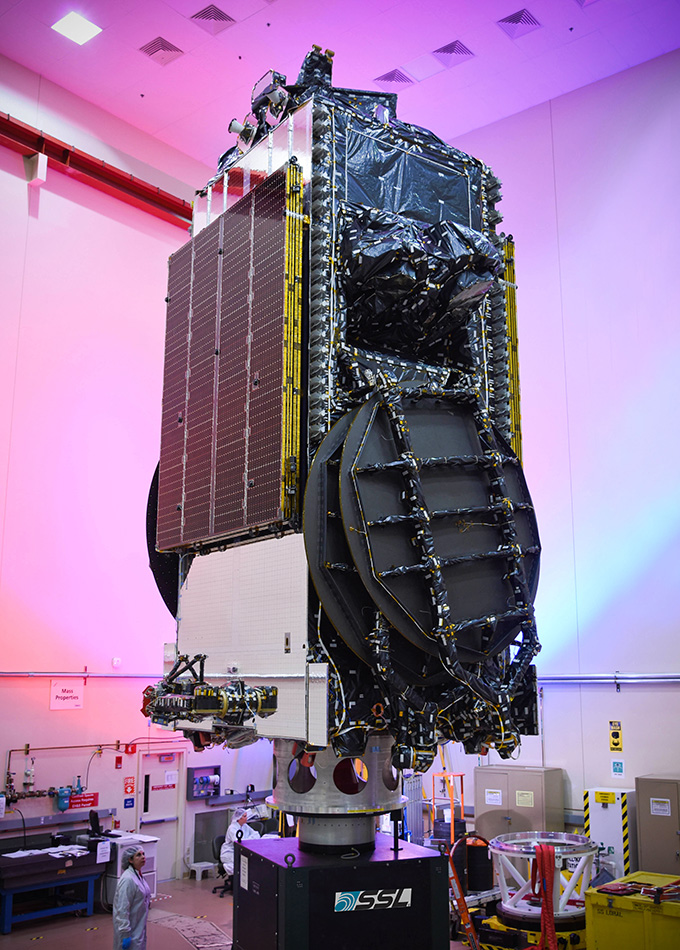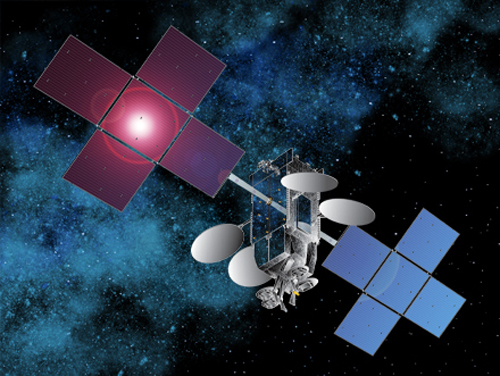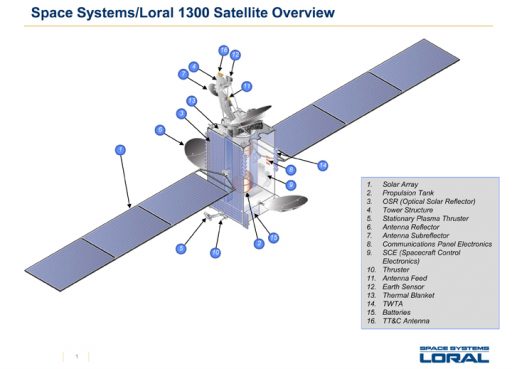EchoStar 19 Satellite Overview

EchoStar 19 / Jupiter 2 is a commercial communications satellite built by Space Systems Loral and operated by Hughes Network Systems, a wholly owned subsidiary of EchoStar. One of the world’s highest capacity broadband satellites, EchoStar 19 is designed to meet the growing demand of high-speed Internet services in North America.
With 50% more capacity than the EchoStar 17 satellite launched in 2012, EchoStar 19 will deliver expanded services to millions of customers with more speed, more data and more advanced features catered to individual consumers and small businesses that are underserved by terrestrial networks.
The EchoStar 19 satellite is outfitted with a high-capacity bent-pipe Ka-Band payload generating 138 customer communications beams + 22 gateway beams to deliver coast-to-coast coverage over North America. This capacity will provide some urgently needed relief as EchoStar has filled a number of the company’s beams to full capacity, requiring additional beams to be able to offer services to more customers.
Space Systems/Loral announced in March 2012 that it was selected by Hughes Network to build the EchoStar 19 satellite based on the company’s flight-proven SSL-1300 satellite platform. EchoStar selected Lockheed Martin Commercial Launch Services in 2015 to provide the launch services for the EchoStar 19 satellite using the ULA Atlas V rocket – taking advantage of the company’s schedule certainty in maximizing the probability of the satellite being available to entry into the market in early 2017.
EchoStar 19 was originally planned to ride into orbit on an Ariane 5 launch vehicle as part of a multi-launch agreement between EchoStar and Arianespace, but the French-based launch provider did not have any slots available in the second half of 2016.

Although Atlas V comes at a higher price tag than a slot on Ariane 5, EchoStar expects the benefits of having the satellite in orbit several months before an Ariane 5 slot opens will outweigh the additional cost through revenue from the satellite by capturing unmet demand for broadband services. Also, Atlas V can deliver the spacecraft to a Supersynchronous Transfer Orbit and save it considerable propellants which can mean additional revenue as it extends the satellite’s operational life.
A launch of EchoStar 19 in late 2016 also enables the satellite to enter operation before the competitor spacecraft, ViaSat-2, becomes operational and EchoStar hopes to capture new customers by making expanded services available before the competitor comes online. ViaSat had booked a Falcon Heavy to launch ViaSat-2 by the end of 2016, but the inauguration of the rocket slipped well beyond that point, requiring the company to re-plan and switch to Ariane 5 that could not facilitate the satellite before early 2017.
EchoStar 19 has a launch mass of 6,760 Kilograms, including ~3,150 Kilograms of propellant to lift the satellite into Geostationary Orbit, targeting an operational location of 97.1 degrees West longitude.


LS-1300 is a flexible satellite platform that can be flown in different configurations to accommodate different communication payloads with a total power of 5 to 20kW. Using different configurations, LS-1300 satellites can weigh from 2,200 up to 6,700 Kilograms featuring payloads of 12 to 150 transponders. LS-1300 was introduced in the late 1980s, but undergoes constant modifications going through a number of revisions over the years.
EchoStar 19 uses the high-power variant of LS-1300, featuring two five-panel solar arrays that deliver 16.4kW of power to a dedicated system that conditions the satellite’s power bus and controls the state of charge of the vehicle’s batteries. Three-axis stabilization and navigation is accomplished by state of the art navigation sensors and reaction wheels.
The satellite is equipped with a chemical propulsion system for orbit-raising and stationkeeping using a main apogee engine and a series of attitude control thrusters. Additionally, EchoStar 19 sports an electric propulsion system for stationkeeping maneuvers in Geostationary Orbit, offering a prolonged satellite life given savings in chemical propellants. Four SPT-100 Stationary Plasma Thrusters are installed on the satellite each delivering a nominal thrust of 83 Millinewtons.
EchoStar 19 has been designed for the typical industry-standard service life of 15 years, however, the propellants saved by the optimized orbital delivery from Atlas V plus the use of electric propulsion can extend the satellite’s life by several years – representing additional revenue, justifying the use of a more expensive rocket.
